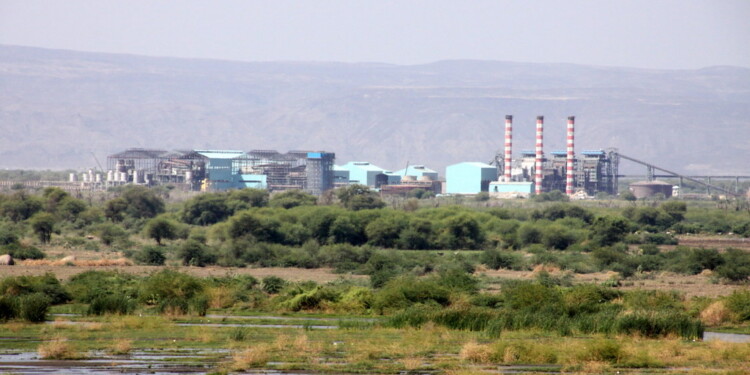One week on since the declaration of a ceasefire amidst Ethiopia’s 17 month long civil war, which has cost the lives of tens of thousands of people, aid workers attempt to get aid to the hundreds of thousands at risk of starvation in the region of Tigray. Ethiopian government forces and the Tigrayan People’s Liberation Front have both accused each other of not facilitating the end of Trigray’s humanitarian blockade.
#UPDATE The first international aid convoy in three months will soon enter Ethiopia's war-stricken #Tigray region, the UN said on Friday, one week after the government and Tigrayan rebels agreed to a conditional truce https://t.co/LuFXLlYlXd pic.twitter.com/pwRdlKSur9
— AFP News Agency (@AFP) April 1, 2022
The UN has said that more than 90% of Tigray’s population are in need of urgent assistance, with three quarters of Tigrayans forced to rely on extreme coping strategies to survive. As reported in the BBC, “About half a million children are estimated to be lacking food in Tigray, including more than 115,000 severely malnourished.” (bold added)
The ceasefire which has in theory left open a humanitarian corridor in the form of a road described in The Economist as running “500 km through some of the most inhospitable land on earth, from Semera in Afar to Mekele, the capital of the state of Tigray,” has led to hopes of movement towards peace, despite limited aid into Tigray.
The UN estimates that 100 trucks worth of food and other essentials must enter the region every day in order to meet the needs of Tigrayans. However, prior to the UN’s recent announcement of an aid convoy (see above tweet), no trucks have been able to enter the region since mid December. Throughout the conflict, all parties have repeatedly been accused of committing atrocities and have faced criticism for obstructing steps that would further the peace process. Again, it seems that despite the cease-fire, the road described above is still deemed unsafe for aid workers.
In a harrowing statement from a recent UN assessment of the situation, the desperation of starving Tigrayans was made clear. In Adigrat, in the Eastern Zone of Tigray, “Food insecurity is severe, and people have managed to cope resorting to negative survival mechanisms, including children engaged in begging and survival sex.”
In the northern region of Ethiopia, where Tigray and other hard to reach conflict-affected areas like Amhara and Afar are located, there are over 9 million people in need of food assistance. Many of those in need in Amhara and Afar are IDPs, internally displaced persons.
Related articles: Cold War Redux: How a Dam On The Nile Has Become an International Issue | Ethiopia’s Crisis in Tigray: Country Declares State of Emergency, As Rebels Near Capital
Since the start of the conflict in November of 2020, the UN says 2 million Ethiopians have been displaced, having to flee their homes as conflict erupted around them, many being separated from their families in the chaos.
IDP camps have been established to help accommodate the needs of displaced people, but have themselves become subject to troubles like outbreaks of scabies, highlighting the multifaceted nature of Ethiopia’s predicament. According to the latest UN report there are currently more than 3,100 identified cases of scabies in Tigray, an 8-fold increase from the 384 cases reported at the start of the year. The majority of these cases are found amongst IDPs in displacement sites, which suffer from “overcrowding and poor living conditions, and lack of effective medications.”
Despite the burgeoning healthcare needs, with an estimated 3.9 million people in Tigray needing medical attention, the humanitarian response has been limited. UN “Partners provided health services to only more than 26,500 people in Tigray during the reporting week.”
Meanwhile, the UN is to move ahead with a probe investigating war crimes committed over the course of the bloody civil war, after Ethiopia’s failed attempt on Thursday to pass a resolution blocking the funding of a Human Rights Council team, charged with looking into abuses committed since the start of the war.
Ethiopia’s tragic predicament is one that exemplifies the way in which humanitarian crises are compounded and exacerbate each other, leading to a vicious and hard to break cycle of death, suffering and violence. Probes, sanctions and condemnations of war crimes enacted by Ethiopian government forces and the Tigrayan People’s Liberation Front have been mounted.
However, the most pressing need is that of the millions of displaced Ethiopians facing humanitarian threats on multiple fronts, and the estimated half a million children facing food scarcity in Tigray, more than 115 000 are severely malnourished.
Will the international community listen and respond?
Editor’s Note: The opinions expressed here by Impakter.com columnists are their own, not those of Impakter.com. — In the Featured Photo: ethiopia – afar, danakil and tigray Featured Photo Credit: Retlaw Snellac Photography.








